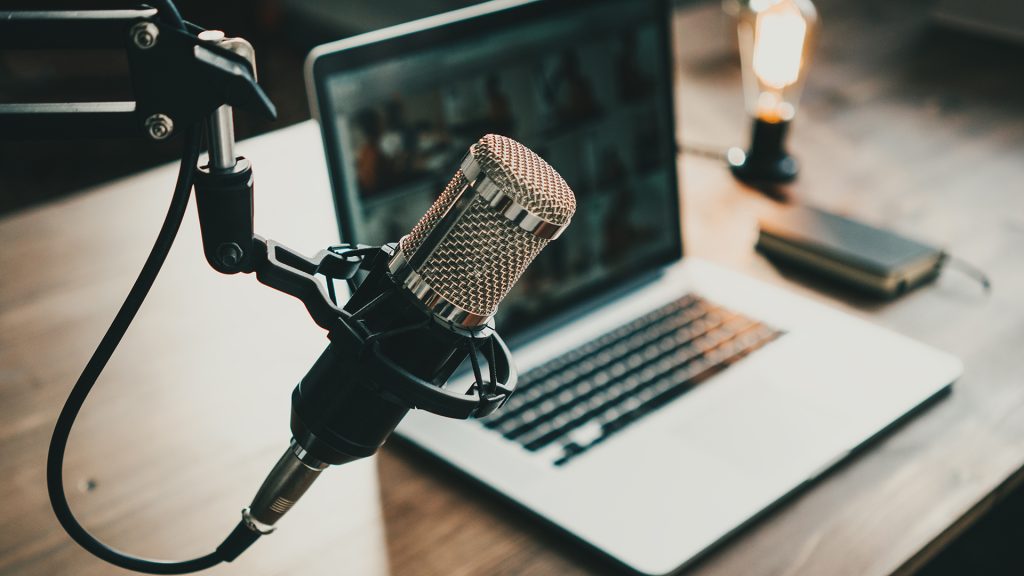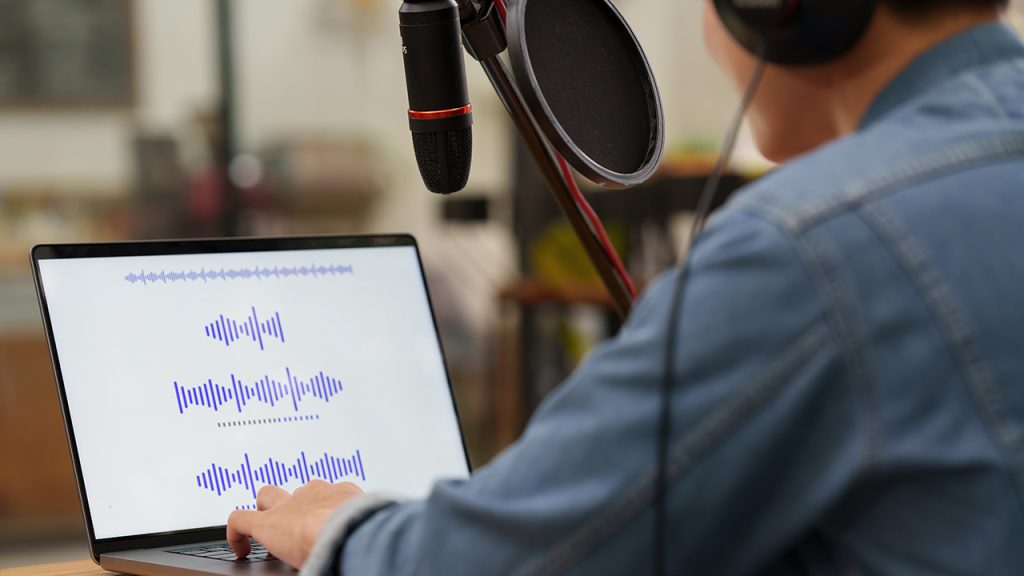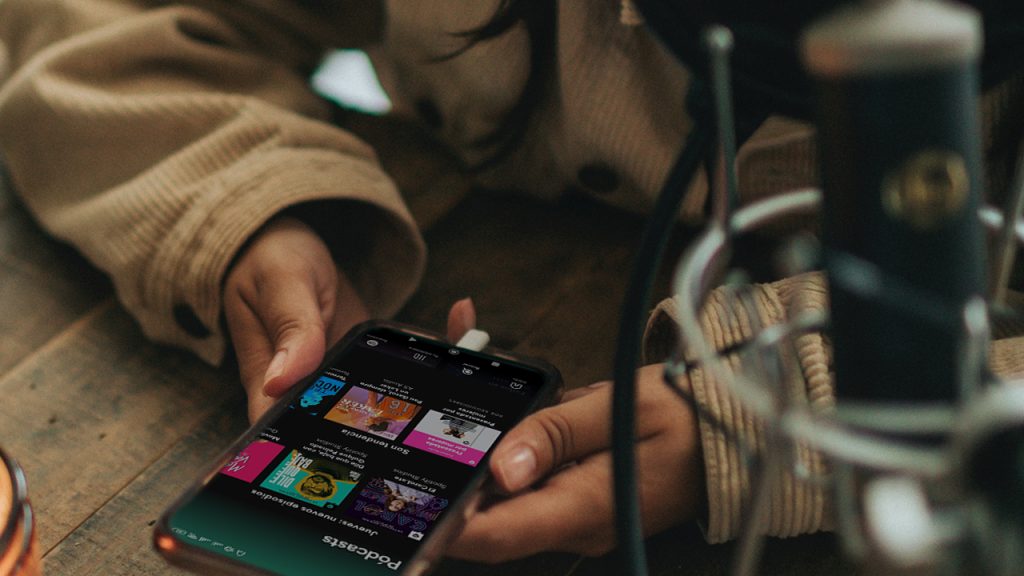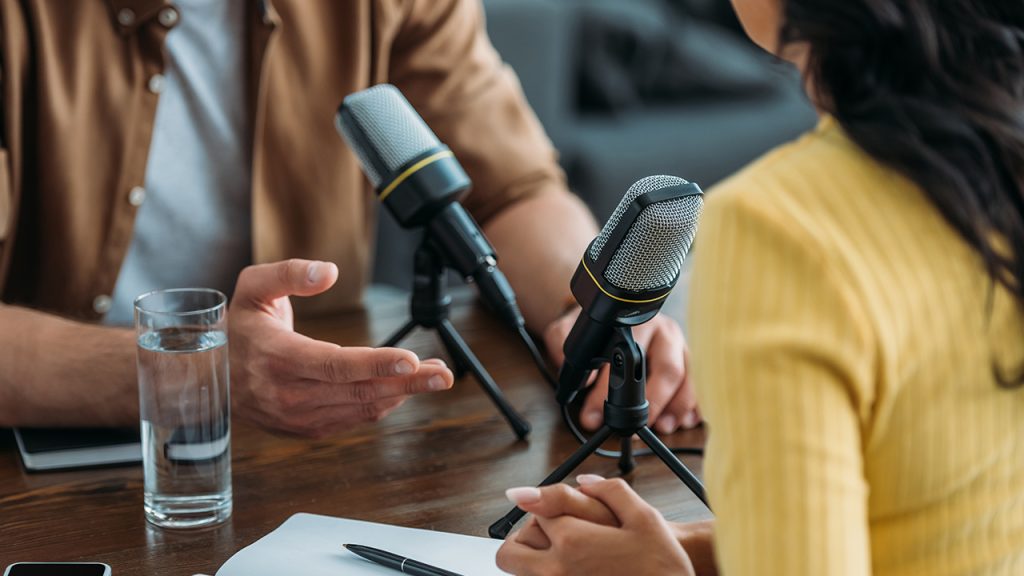
How to Create a Podcast
If you are thinking about how to create a podcast you are in luck, because it is one of the best times to take the plunge. This format has become very popular in recent years and, the best thing is that it is expected to continue to grow.
If you have a personal or commercial brand, a podcast would be a good ally, as it could become one more leg of your physical or digital business. It is a very powerful tool that will allow you to disseminate valuable information and, at the same time, publicize your company, personal brand or your knowledge in any subject or hobby.
Want to know how to make a podcast on Spotify and other platforms? Keep reading!
What is a podcast?
You know we don’t like to build the house from the roof up, so the first thing we are going to do is to define the concept. A podcast is an audio file that is shared on online platforms. We could say that it is the equivalent of digital radio.
For some years now, the popularity of this format has been growing steadily. It has the best of radio, that connection and intimacy with the listener, and the best of digital, that you can listen to it wherever and whenever you want. Precisely, one of the reasons why podcasts are so popular is that they allow you to do several things at the same time. You can listen to it while cooking, doing housework, or driving. It also supports a wide variety of topics and programs, from general to specific.
After clarifying this, let’s go to the kit of the question, how to make a podcast.

How to create a podcast step by step
Creating a podcast is relatively easy, if you know how to do it, of course. So to make your start as easy as possible, in today’s article, we’ll tell you how to create a podcast in 12 steps + 1 extra tip. Let’s get started!
1. Topic and name
What will the podcast be about? This is the first thing you should answer. There are an infinite number of topics. Think about it and evaluate all the options taking into account the interest of the users, what the topic can give you and the knowledge you have about it.
Another question you should ask yourself is why you are doing the podcast. For example, if you have a company and you are doing it to address key industry issues, if it is purely informative, or if you just want to have a good time. Defining the objective will also help you select the best format (interview, debate, chat among friends, etc.) and duration (long, short or pills).
Then we come to the part of the name, which has to be attractive, with a hook and, if possible, refer to the theme or general concept of the podcast. We recommend brainstorming with the team, testing names and sharing it to get feedback.
2. Participants
As a general rule, a podcast usually has at least two voices. Think about the fixed number of speakers, contributors, guests for each program, etc. This is very important both to have the technical material available and to elaborate the next point: the script.
3. Script
You already know what format your program will have and how many people will participate in it, now it’s time to write a podcast script. This will vary depending on each episode, but for your reference, here is a basic structure:
- Introduction. Welcome message, presentation of the speakers and topic to be covered.
- Presentation of guests, if any. Who they are and why they come to the program.
- Development. The course of the program (interview, talk, debate, etc.).
- Summary. It is optional, but if a lot of information has been given or complex topics have been dealt with, a short summary or final conclusion can be made so that the listener is left with a clear idea.
- Closing. Farewell to the program and thanks to the listeners.
- Call To Action. A call to action to ask the users to subscribe, leave a comment, share the podcast on social networks, etc. The ideal is to make a maximum of one or two calls.
One of the latest trends in podcasting is improvisation: launch a concept or topic and start talking without a script. If you feel encouraged and this fits your business, brand and style, you can try it. The truth is that it gives a touch of reality and generates a high engagement with the audience. If, on the other hand, because of the type of podcast you have in mind, you think it may confuse listeners and not make the ideas clear, it is preferable to stick to the script.
4. Vocal preparation and care
The voice is the most important aspect in a podcast, so we recommend you to take care of the tone, vocalize well and work on your diction. Keeping these aspects in mind will help you connect better with the listener and transmit a clear message.
Think that it is your work tool, so you should take special care of it. In case you are interested, we recommend some simple habits that will help you to maintain a smoother and more relaxed voice:
- Drink plenty of water.
- Avoid very cold liquids so as not to strain your vocal cords.
- Drink hot beverages. If you wish, you can add honey or ginger to soothe.
- Perform relaxed vocal warm-up exercises for 10 minutes before recording.
- If you have throat or voice problems, we recommend that you consult your doctor.

5. Technical equipment
This point generates a lot of headaches for some people, especially at the beginning, but it is simpler than it seems. We suggest you start with the basic equipment and, as you grow, invest in improving the quality.
If you are starting from scratch, you will need:
- A computer or recorder.
- A space without echo.
- An editing software.
These are the three basics. And our recommendation is that you invest a large part of your financial resources in a good microphone, since a quality sound will give you that professional finish and will be more pleasant for the listener.
6. Recording
The recording space you choose will be very important for the final result. As we have already mentioned, it must be a room without echo and, of course, without background noise.
If you are recording in a professional studio you will not have to worry about this aspect, as the space will be more than prepared for it. If you have to record in a home, office or similar, try to make sure that the room is as far away from the street as possible and that no sound enters.
7. Editing
Even if you have recorded everything perfectly, you will always have to edit the file so that it reaches the audience with the highest possible quality. You can delegate this task to a professional, or you can do it yourself with a specialized program.
The most important aspects that should be corrected during the editing process are:
- The unevenness of voice.
- Background noise.
- Introduce an intro and another one, if it has not been added during the recording.
Note: now that you are preparing the material to be published, don’t forget to design an attractive cover for the podcast. It is not part of editing the audio file, but you will need it.
8. Copyright Registration
As you know, we are committed to advise you on the protection of your works, so this recommendation could not be missing.
You should know that as the creator of a copyrighted work, you are not obliged to register it. However, by doing so, you will be able to avoid plagiarism attempts and you will be able to work with greater peace of mind.
If you decide to do so, at Safe Creative we have an online registration system from 6,5€ per month, where you can upload the script, the cover, the recordings, the final edition and all the formats you need. Just follow these steps:
- Log in to your account or create a new one if you don’t have one yet.
- Click on “new registration”.
- Select the type of work.
- Upload the file and complete the required fields. You can (and, in fact, should) include all authors and the percentage that each one contributes to the work.
Once you have completed the process, you will receive in your email the certificate of authorship registration with the date of registration. Although we hope you will never have to go through such a situation, if one day you are involved in a possible case of plagiarism, you have an internationally valid proof that will make things much easier for you.
9. Publishing
Now, with your episode registered, you can publish it in the platforms you have chosen. There are many, so we recommend you to choose the ones that best suit your current needs. Some of the most prominent are: SoundCloud, Ivoox, Podium Podcast, Apple Podcasts or Spotify. And, of course, you don’t have to bet on one, you can publish your podcast in several of them.
What you should consider when deciding on a platform are the millions of people who use it, if it is free or paid and if it is exclusive for podcasts or if they upload more audio files. For example, publishing a podcast on Spotify is always a good idea because they have a long and solid track record, offer users a free and a premium version, and include other types of multimedia files, such as music.
10. Broadcast
Who can’t use a boost, especially when you’re just starting out? To increase your reach, you can share the podcast on your professional social networks, blog or website. The important thing is that you provide a link with direct access to listen to it.
But don’t just share it and that’s it. Publish different pills of the same episode to capture the attention of users. For example, if the podcast is available on Sundays, announce it on your channels on the same day. Then, on Monday, you can publish another excerpt of the program. This will encourage users to come in and listen to it.
11. Promote
If you can allocate part of your budget to advertising campaigns, consider this possibility. It will help you a lot, especially at the beginning, and your program will reach a new audience.
You can use platforms such as Google, YouTube, TikTok, Instagram, Facebook or LinkedIn. Ask yourself where your target audience is and open a profile on that social network. To create a campaign, you can opt for two strategies:
- Create a post expressly for that ad (image + text).
- You can leverage your organic content and invest in one of the most engaged posts.

12. Analysis of results
Here comes the less fun, but necessary part: the numbers. To know how your podcast is working, you have to measure the results. We recommend checking it weekly or monthly (depending on your publication frequency) to evaluate how it is evolving. Of course, if you start from 0, the first few months will not be very representative.
There are no performance indicators for everyone, they will vary depending on the program and objective. But to give you an idea, these are some values that you should consider:
- Reproductions.
- Downloads.
- Average listening time.
- Countries and regions that have listened and/or downloaded the most.
- Engagement (sum of comments, likes and shares).
In addition, if you are giving diffusion from your social channels, it would be interesting to also measure the interactions of the posts.
So far the basic steps on how to make a podcast. But if you are a regular reader of this blog you will know that we love to give you more, so here is a very valuable extra recommendation.
13. Extra: make collaborations
You can plan it in two ways. Either you are the one who appears in other podcasts or you invite interesting people to your program. Either way, the most important thing is that the audience of the collaborator you choose is your target audience.
For this strategy to work, you have to sell yourself well, which is nothing more than knowing how to present your value proposition to the other person. All you have to do is answer these questions:
What will it do for the contributor to come to your podcast?
What can you offer their audience to make them want to invite you to their program?
We hope this guide has been helpful. Now all you have to do is press play, and we’ll listen to you from the other side!
